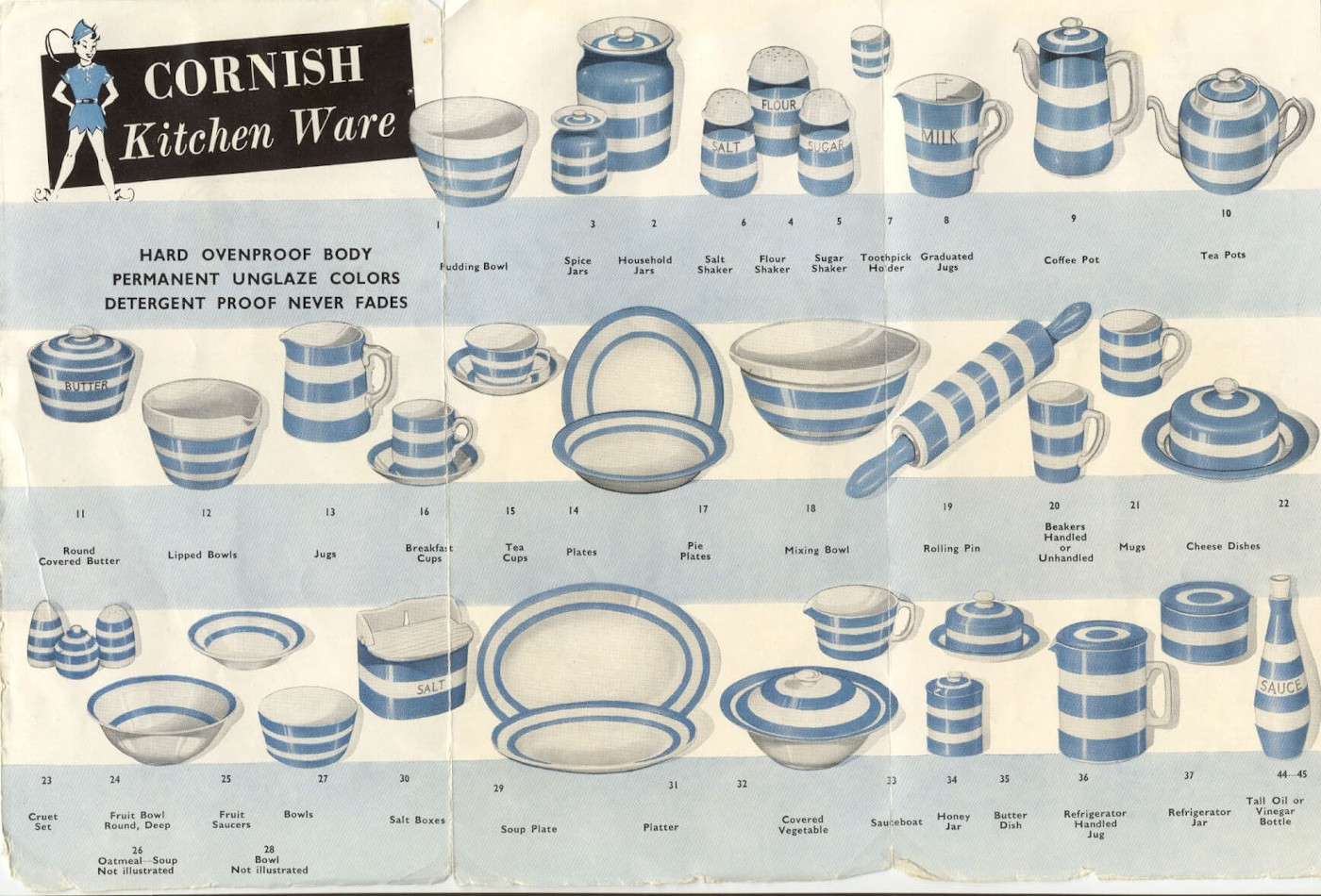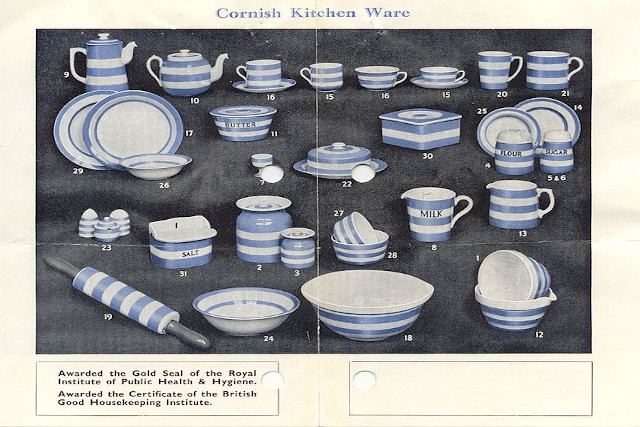All You Need to Know About Lizard Lighthouse
Located on the stunning Lizard Peninsula, Lizard Lighthouse marks the most southerly point of mainland Britain. With two distinguishing...

Most people will be familiar with the distinctive blue and white striped pattern, even if you don’t recognise the name. First produced in 1924, Cornishware is a range of kitchenware that includes everything from egg cups to biscuit jars. An enterprise that started in Derbyshire and has connections to Cornwall now has avid fans and collectors all over the world.

Cornishware was first produced in the 1920’s but T.G. Green, the company that manufactured it, had already been making tableware and kitchenware for a number of years. In the 1860’s, Thomas Godwin Green, while on honeymoon in Scarborough with his new wife, Mary Tenniel (the sister of Sir John Tenniel, the illustrator of Alice in Woodland), made a decision to buy an existing pottery factory. The factory, based in Church Gresley, Derbyshire, was re-named in 1864 to T.G. Green and would go on to become one of Britain’s leading manufacturers of domestic pottery.
The romanticised version of how Cornishware got its name is that the white waves and blue skies of Cornwall inspired the blue and white pattern. Whilst that may have been a clever idea conjured up by the advertising department the truth in fact lies in the material and production technique. The creation of Cornishware is attributed to Frederick Parker, a General Manager who joined T.G. Green in 1919. He was trying to perfect the technique of banding the colour, which is referred to as electric blue or e-blue. He tried to create this with local clay but none of them achieved the desired results. It was only when he used Cornish china clay, mined in the St Austell area, that he was happy with the outcome. The first range of Cornishware was launched in 1924.

Sales of Cornishware grew steadily and the pottery was sold in department stores across the UK and even exported across the world. As well as the traditional blue and white striped pattern, a number of other colours were introduced to the range including yellow, red, orange and black. Many pieces came with standard lettering but buyers could also get items personalised, meaning you could have pots, jars and bowls for hundreds of different uses and products. This personalisation has resulted in some highly valuable items due to rare lettering and mis-spellings!
The company changed owners a few times between 1964 and 2004, with sales starting to decline in the 1980’s. It became increasingly difficult for T.G. Green to compete with the modern pottery manufacturers and cheap imports were also flooding the market. The company was sold to Mason and Cash in 2001 and sold again in 2004 to The Tabletop Group. The future of T.G. Green was looking very bleak and in 2007, suffering from the impact of the financial crisis, the factory was closed.
Thankfully, the history of Cornishware does not end there. In 2009, lifelong admirers, Paul Burston and Charles Rickards, teamed up with designer and brand consultant, Perry Haydn Taylor, to re-launch the brand. Production has been moved to Somerset, and as well as reviving traditional items, new products such as aprons and oven gloves have been added.
A whole range of goods are available to buy on the official Cornishware website, including the option to personalise your items. If you are visiting Cornwall you can find a variety of products in The Cornish Store in Falmouth and Morrab Studio in Penzance. Older examples of Cornishware can also be found in antique shops or at auctions. Just be careful that the item isn’t a fake and is actually a piece from the period it claims – if it claims to be from the 1930’s or 1940’s then it shouldn’t have a dishwasher proof stamp!
If you are feeling inspired to visit Cornwall then take a look at our range of stunning Cornish cottages. We have properties all over Cornwall, including cottages in St Austell, where you can visit the china clay mines and learn all about the history of this area.
Image credit: T.G.Green – (CC BY-SA); T.G.Green – (CC BY-SA)